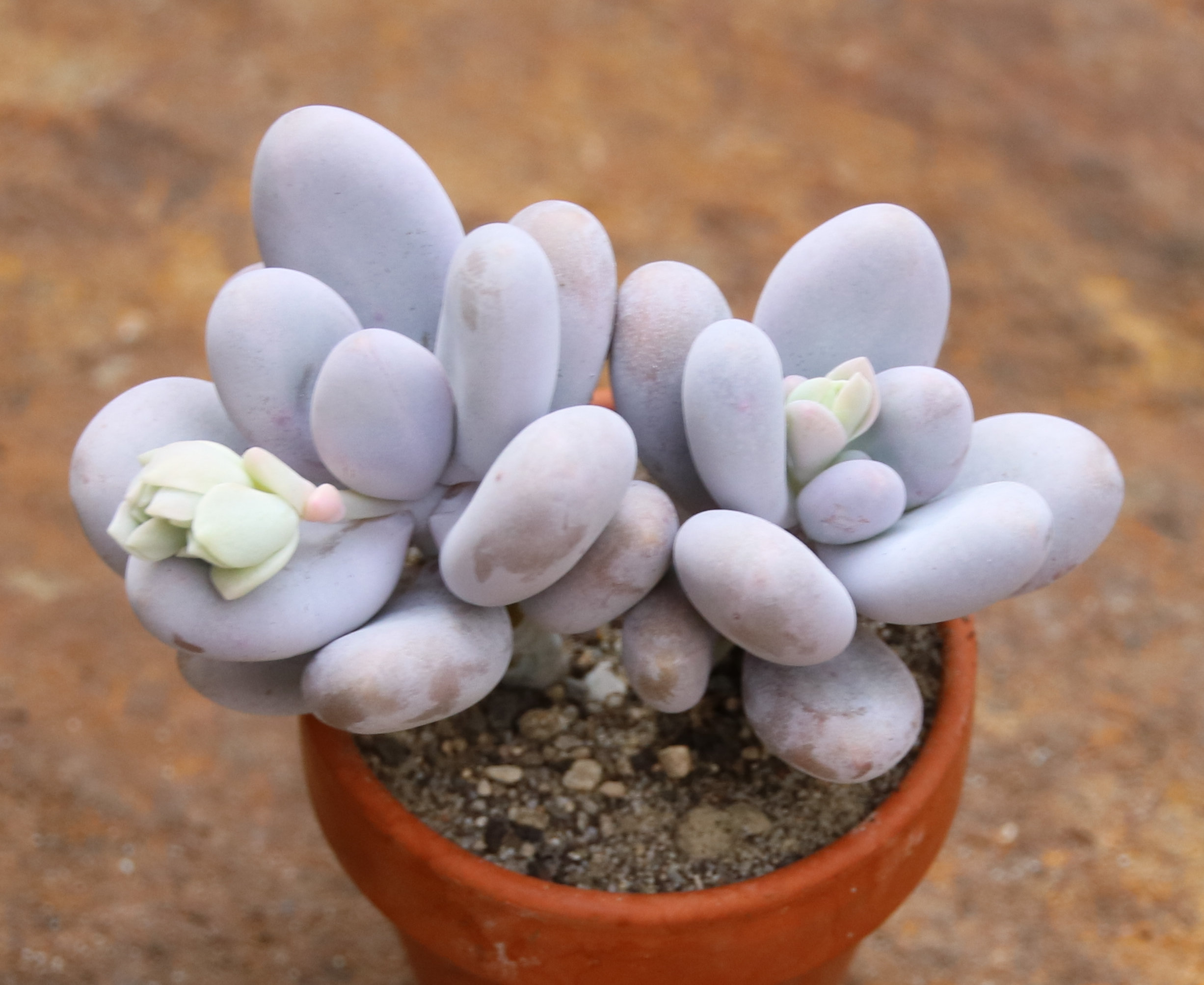
Pachyphytum oviferum Kakteen Shop
Pachyphytum oviferum (Pak-ee-fy-tum oh-vee-fer-um) is a small and charming member of the Crassulaceae family of plants native to the rocky cliffs of San Luis Potosi, Mexico. The self-explanatory meaning of the Latin genus name, Pachyphytum, is "thick plant. " The specific epithet, oviform, means "bearing eggs."

Pachyphytum oviferum Succulents Australia Sales
The bigger lip, fuzz, and pit her style more fits that species. For a venosa and purpurea, purps are usually more long then squat compared to venosa, the hood is less wavey and can more more open or closed, and the veins on the body of a venosa is usually more pronounced. It's easy to tell a rosea from a venosa or purp by the flower colour.

Pachyphytum oviferum, Pachyphytum 'Moonstones' uploaded by zaibs
The Pachyphytum Oviferum (Moonstone Succulent) thrives in a dry environment but also needs water. Allow the soil to completely dry out before watering again, and only water when the top inch of soil feels like it's been baked by summer heat. The plant should be watered once a week or every few weeks.
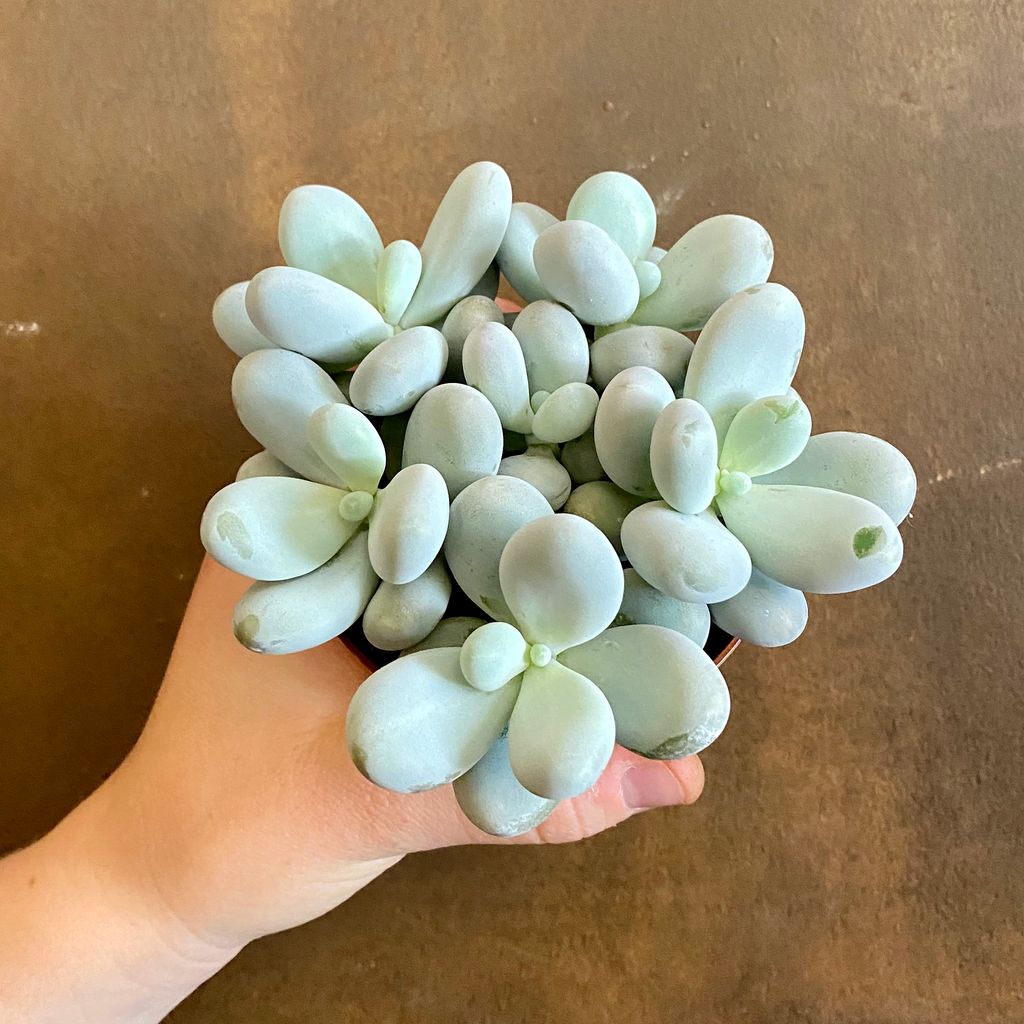
Pachyphytum oviferum grow urban.
The Pachyphytum oviferum, commonly known as Moonstone succulent, grows chubby, rounded leaves in pretty pastel colors.. The matte powdery leaves come in shades of light green or blue gray, and turn pink or purple when grown in bright light. The succulent leaves store water inside, making them drought-tolerant and easy to care for.Just make sure the plant gets plenty of light and don't water.

Pachyphytum oviferum Succulovers
Botanical Name: Pachyphytum oviferum You'll love growing this eye-catching succulent. Commonly called moonstones, those plump, smooth leaves look like polished stones in pretty pastels. Growing in rosettes up to 4 in (10 cm) across, they may be pink, peach, grayish-lavender, light blue or light greenish-blue.
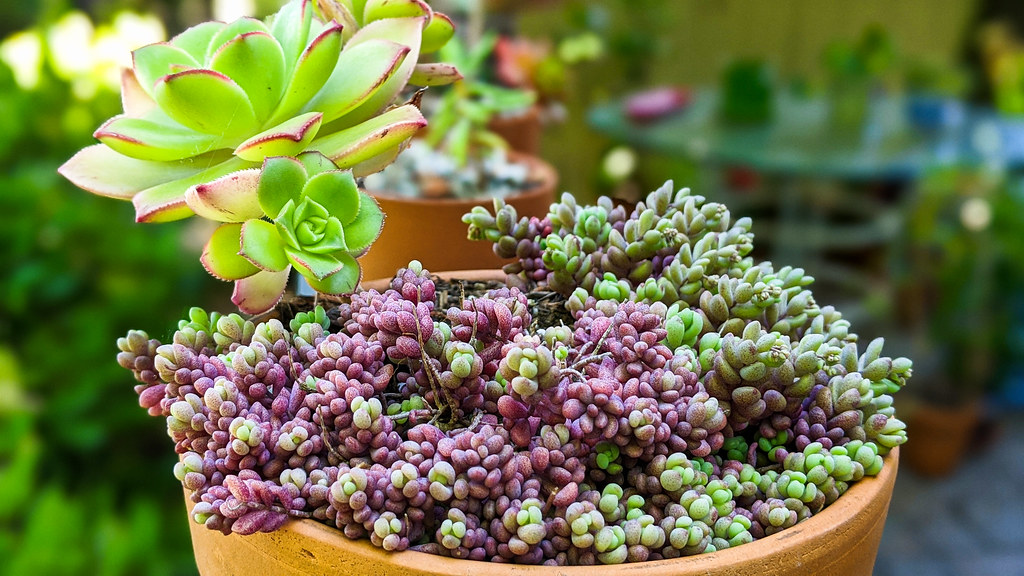
Pachyphytum oviferum and Echeveria variant J P Flickr
Pachyphytum oviferum J.A.Purpus Monatsschr. Kakteenk. 29: 100. 1919 Family: CRASSULACEAE Origin and Habitat: Mexico (Northern America) Habitat: Often found clinging on steep cliffs in crevices on the rocks. Synonyms: Pachyphytum oviferum J.A.Purpus Common Names include: ENGLISH: Pearly Moonstones, Moonstones, Sugar Almond Plant
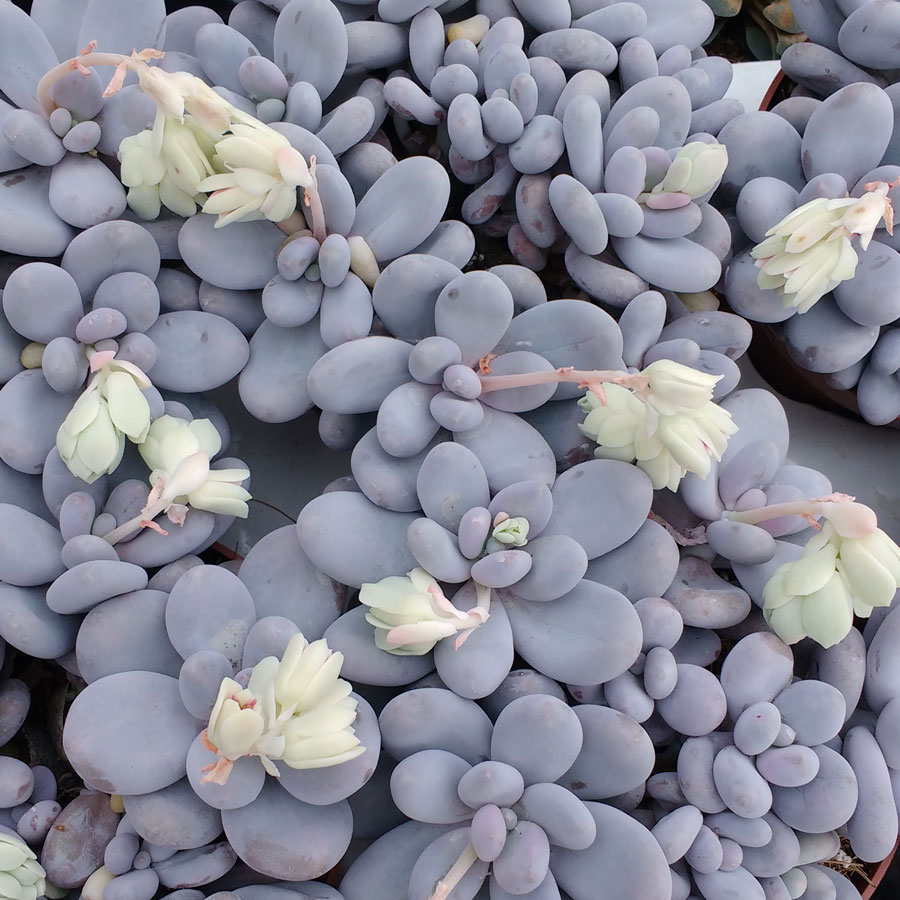
Buy Pachyphytum oviferum plants online
Description: Pachyphytum oviferum is undoubtely the most famous plant in the genus Pachyphytum. It is a slow-growing succulent that forms a clump of rosettes, like a shrub, with peculiar leaves, shaped like big candies, oval, flattened but rather thick (4-5 millimeters). The cultivated forms may have a single stem, up to 1,5 centimters wide in.

Pachyphytum_Oviferum Badylarz kwiaty cięte w euforii
Pachyphytum oviferum is a succulent from the Crassulaceae family, just like the jade plant. It originated from Mexico and is described to have a rosette of powdery egg-like plump bluish green leaves (1). This appearance is likened to the "moonstone" and the "sugar almond" hence, the plant goes by these names too.

Pachyphytum oviferum
Pachyphytum Oviferum belongs to the family of Crassulaceae and the Pachyphytum genus. Native to Mexico, this succulent grows on rocky cliffs at about 1200 meters altitude. The botanical name of the Moonstone succulent is Pachyphytum Oviferum, which is a reference related to the shape of its leaves.

Pachyphytum Oviferum Fat Leaf Form Succulents Australia
Main species Pachyphytum bracteosum Pachyphytum compactum Pachyphytum oviferum How are they cared for? Location Irrigation Subscriber Multiplication Seeds Leaf cuttings Stem cuttings Planting or transplanting time Plagues and diseases Rusticity See all sections Origin and characteristics of the Pachyphytum

Pachyphytum oviferum Succulents, Plants, Succulent Plants, Plant,
Pachyphytum Oviferum (Moonstone) The Pachyphytum oviferum, also known as the moonstone, is a beautiful full sun succulent plant that can add a touch of elegance to any garden. This succulent is native to Mexico and can reach up to four inches tall and 12 inches wide.
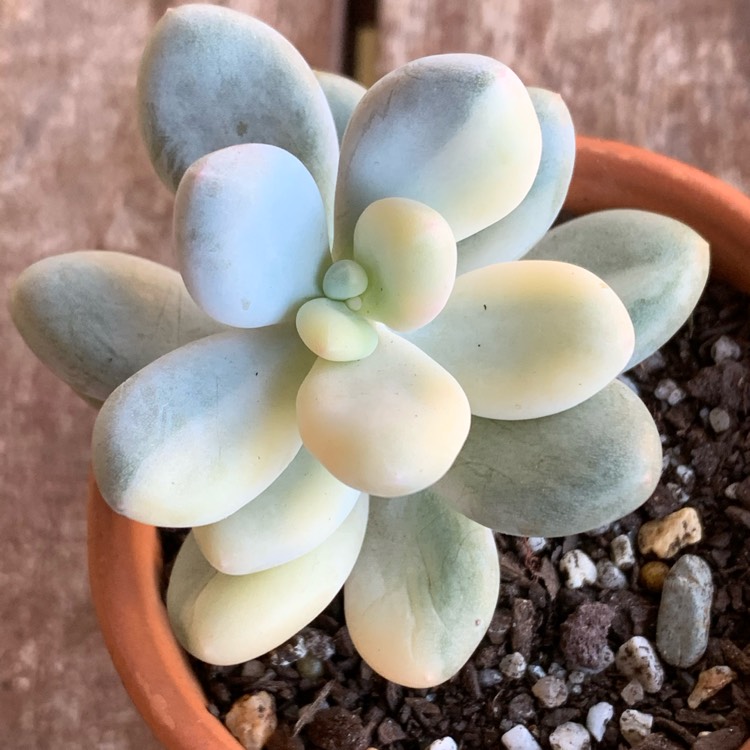
Pachyphytum Oviferum Variegated, Pachyphytum Oviferum Variegated
Pachyphytum bracteosum's closest relatives are Pachyphytum oviferum and Pachyphytum longifolium. Pin. Pachyphytum Bracteosum, a member of the family Stonecrops (Crassulaceae), is a remarkable little plant with really plump, silvery-grey leaves that tend to pink and produce really exceptional bracteated spikes of flowers. The whole plant is.
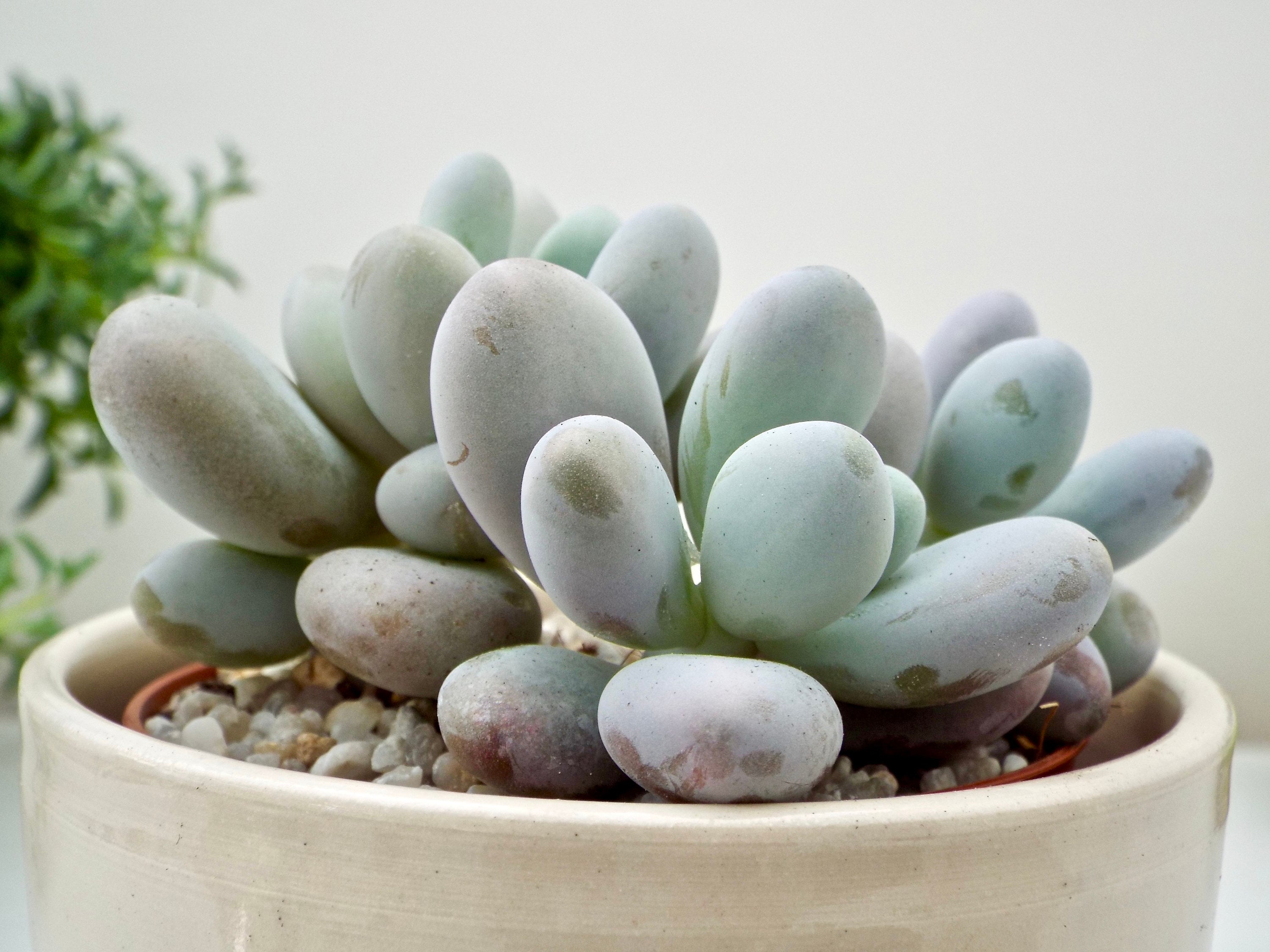
Pachyphytum Oviferum ubicaciondepersonas.cdmx.gob.mx
Firstly, place some gravels into the bottom of your plant pot and fill it with a potting mix, which is specifically made for succulents. The container you will be planting your Pachyphytum Oviferum in does not have to be very deep; if your succulent is 2-inch tall, a 2.5-inch container is a good choice. As your plant grows, your plant pot can.
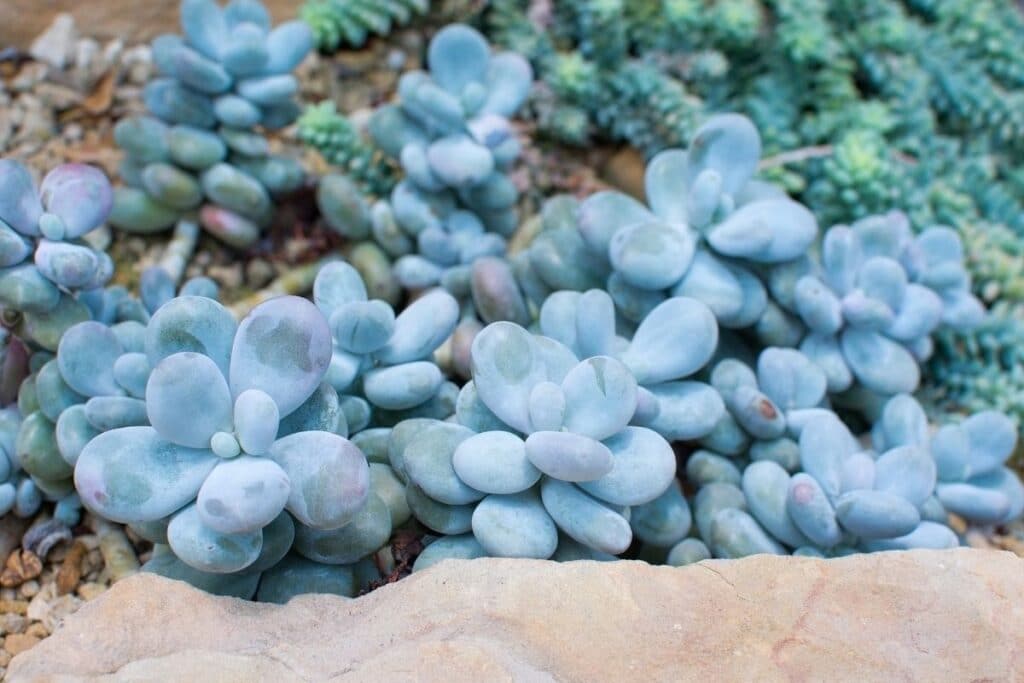
Moonstone Succulent (Pachyphytum oviferum) How to Grow and Care
Moonstone Succulents, botanical name Pachyphytum oviferum, are a type of flowering succulent endemic to Mexico. These plants get their name from the beautiful moonstone-like color of their leaves. They're also called Sugaralmond Plant in some circles. The entire plant: stem, leaves, and flowers, are covered with a thin coating of white fur.

Pachyphytum oviferum Кактус Киев
Pachyphytum oviferum is a popular clump-forming succulent with chubby, pale blue-green to bluish-purple leaves arranged in a rosette at the tips of short stems. The rosettes can reach up to 4 inches (10 cm) in diameter.

Pachyphytum Oviferum Guide How to Grow & Care for "Moonstones"
This succulent tends to grow both in height and in width, giving origin to a rounded shrub. Leaves are distinctively patterned with lots of nice colours (especially when stressed by cold or drought). Pachyphytum fittkaui Pachyphytum fittkaui Pachyphytum glutinicaule Pachyphytum glutinicaule Pachyphytum hookeri